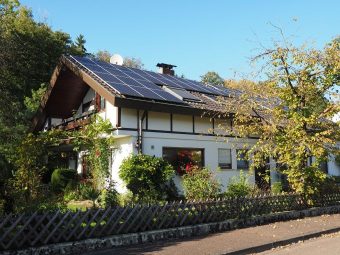
How does a co-op make rooftop solar systems more affordable? Ten people who band together to buy something usually get a better price than ten people acting individually. That’s the idea behind the St. Pete Solar Co-op, which began in 2016 when the local League of Women Voters partnered with Florida Solar United Neighborhoods, whose mission statement says it seeks to expand “access to solar by educating Floridians about the benefits of distributed solar energy, helping them organize group solar installations, and strengthening Florida’s solar policies and its community of solar supporters.”
Getting a rooftop solar system for your home is still a daunting task. Even though the cost of solar panels is falling, there are still a welter of questions facing homeowners. Which installers are reliable? Who has the best warranties? Who will service the system after it is installed? Who takes care of permitting and coordinating with the local utility company?
Not only does the St. Pete Solar Cooperative help customers save up to 20% on their rooftop solar systems, it also serves as a place where interested homeowners can learn more about solar power, find answers to their questions, and benefit from the moral support that comes with acting in concert with others rather than alone. As interest in solar energy grows in the state of Florida, more resident-driven co-ops are forming. FL SUN will launch co-ops in North Pinellas and Hillsborough counties Sept. 25, joining the dozen running across the state and others in formation.
FL SUN Coordinator Dave Sillman says now is the time for both residential and commercial solar energy to boom. “We’re trying to push it along to that tipping point. That’s the key to the co-ops,” he explains. “Not only is solar much more affordable now — it is the best investment you can make. Solar systems on average pay for themselves in about eight and a half years, warranty for 25 years and should last 35 to 40 years, so they pay back two to three times what you invest in them,” Sillman claims.
About 240 people joined the St. Pete solar co-op last year, and about 50 of those homeowners installed solar, according to St. Petersburg area League of Women Voters president Julie Kessel. There’s no cost to join and no obligation to go through with installation. Many people participate in the co-op just to get information and learn about the industry, she says.
At co-op meetings, residents learn about the cost savings of solar, the environmental benefits, and the logistics of installation. The co-op groups issue a competitive bid to installers and hire one together as a group. The League is also working to bring alternative financing options to the area that will offer low- and middle-income families with good credit lower cost financing for their solar panel systems.
“The demand is there,” Kessel says. “We know people call us all the time asking ‘Do you have the co-op up?’ and ‘When is the co-op coming back?’ We are on the front lines for sea level rise in St. Pete and the surrounding beach communities. There are very practical reasons to adopt solar.” Especially now when half of Florida residents are without electrical power following the drubbing the state took from Hurricane Irma.
One beneficiary of the St. Pete Solar Co-op is Brenda Probasco of Gulfport. With the 30% federal tax credit and the discount she got as a co-op member, she was able to get a 15 panel rooftop solar system installed on the roof of her 1,260 square foot, 3 bedroom home for $6,800. In August, her electric bill was just $5.49 — in AC-dependent Florida.
“I’ve always been an environmentally conscious person, and I know climate change is real,” says Probasco. “I think we’re getting to a point in Florida where when you do a checklist of things you need to have in your house like a refrigerator, solar panels are just going to be a part of that.” With the advent of more solar co-ops, her prediction could well become a reality.
Source: cleantechnica.com


